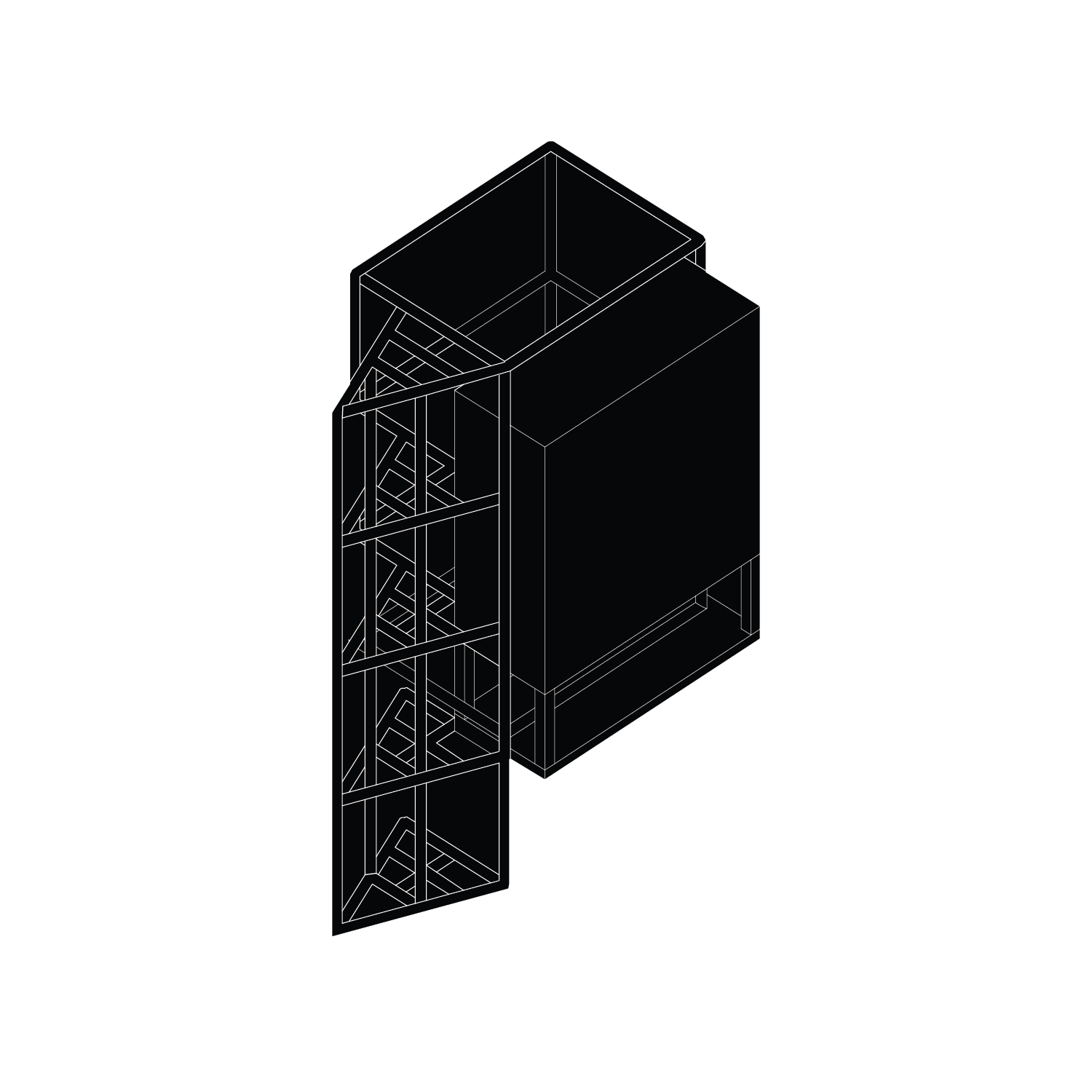The “Revolving” Door
Deconstruction and reassembly study of a structural component in DTLA
Type: Individual Academic Work @USC School of Architecture
Date: 2014
Location: Los Angeles, CA
[Revolving] ri-ˈväl-viŋ, adj.
a. tending to revolve or recur, especially: recurrently available
b. relating to, or being credit that may be used repeatedly up to the specified limit
c. turning around on or as if on an axis
Wandering in downtown Los Angeles, one will be punctuated by moments of exuberant form, architecture, and civilian design. Besides those are many infrastructures, which are remnants of the metropolitan golden age of the city core. This project starts with a scavenger hunt in the central part of downtown LA, trying to excavate architectural relevant components that are not considered attractive in contemporary urban aesthetic but have a potential spatial quality that can be retrieved from a series of deconstruction study.
The revolving door is a connector between the outdoor and indoor space and a transformational object that helps transfigure the outside and inside perception. It contains a physical structure made out of metal and glass. The project comprises two phases, the “deconstruction” and the “reassembly,” which performs the research through a series of analytical drawings.








[ Revolving Door – 707 Wilshire Boulevard, LA, CA ]
The exploded drawing shows how the revolving door’s physical structure is formed and then introduces an imaginary boundary box that wraps the system around to create a “negative” space in-between.
The exploded drawing shows how the revolving door’s physical structure is formed and then introduces an imaginary boundary box that wraps the system around to create a “negative” space in-between.


[ Concept Model ]

[Analytical Drawing]
c. turning around on or as if on an axis
Referring to the revolving axis as a center, this is a further explosion of the negative space created by the immediate adjacent walls and the revolving door structure’s entity. The feature half-circle, trapezoid, and the cross together shape a new language on dividing spaces.

[Transformation Drawing]
a. tending to revolve or recur, especially: recurrently available
a. tending to revolve or recur, especially: recurrently available
Utilizing the spatial language derives from the previous drawing as a tool to design a cluster of forms by rotating, flipping, and repeating. This creation sees the possibility of a new spatial system that includes negative spaces and circulations.

[Analytical - Transformation Drawing]
b. relating to, or being credit that may be used repeatedly up to the specified limit
b. relating to, or being credit that may be used repeatedly up to the specified limit
A reproduction of the spatial system from the previous drawing emphasizes the section’s quality and the shadow position.